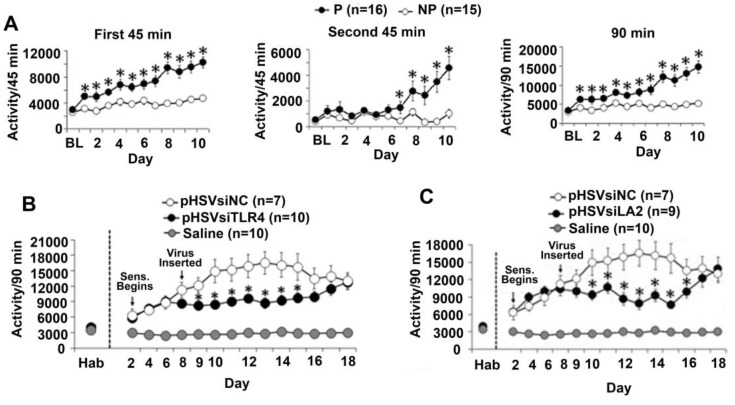Figure 7.
Nicotine enhances locomotor sensitization in the P rats through α2/TLR4. (A) Subcutaneous (sc) injections of nicotine (0.4 mg/kg) immediately before the daily locomotor activity examination showed that nicotine sensitization occurs in the P (n = 16) rats but not in the NP (n = 15) rats. Compared with the NP rats, the P rats were sensitive to the locomotor-enhancing effects of nicotine, with a significant interaction of Line × Day during the first 45-min (F(11,154) = 8.723, p < 0.001), second 45-min (F(11,154) = 8.805, p < 0.001), and summative 90-min periods (F(11,154) = 4.047, p < 0.001). (B,C) The P rats habituated to saline were infused with pHSVsiTLR4 (n = 10) (B), pHSVsiLA2 (n = 9) (C), or pHSVsiNC (n = 7) (B,C) used as a control in the VTA, and after 72 h of recovery, they were given sc injections of nicotine (0.4 mg/kg) and examined for locomotor activity. Saline (n = 10) was infused alone, and locomotor activity was measured in parallel, with saline infusion showing a baseline of locomotor activity (B,C). Horizontal activity of the P rats during nicotine sensitization was significantly decreased by treatment with pHSVsiTLR4 (B) or pHSVsiLA2 (C) but not pHSVsiNC (B,C). Significant Treatment × Day effects were seen following both pHSVsiTLR4 (F(13, 94) = 3.543, p < 0.001) and pHSVsiLA2 (F(13,89) = 4.232, p < 0.001) treatments.

